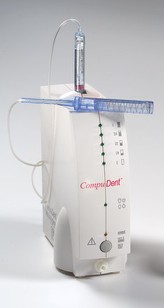 A visit to the dentist can include new terminology and new experiences. If you know what to expect ahead of time, the experience can be more comfortable and pleasant. Many people have a lot of questions related to anesthesia and sedation; this information may answer some of your questions. It may also provide you with talking points or conversation starters if you want additional information.
A visit to the dentist can include new terminology and new experiences. If you know what to expect ahead of time, the experience can be more comfortable and pleasant. Many people have a lot of questions related to anesthesia and sedation; this information may answer some of your questions. It may also provide you with talking points or conversation starters if you want additional information.
Remember that the staff at Moore Family Dental is always happy to answer any questions. As your partners on the journey to excellent oral health, the entire staff is committed to providing you with all the information you need to help you feel comfortable and to making your experience as pleasant as possible.
Many patients are afraid of needles; many others prefer to avoid them if they can. Whatever your feelings are, you may be pleased to know that Moore Family Dental proudly features the CompuDent™ system to deliver anesthesia. This means that injections are painlessly administered via the CompuDent Wand, which looks something like a pen; this is welcome news for those who have an aversion to even seeing a needle.
There are many terms associated with anesthesia and sedation; it can be very helpful to have a basic understanding. For example, topical anesthetics are “applied to mouth tissues with a swab to prevent pain on the surface level; [they may also be used] to numb an area in preparation for administering an injectable local anesthetic [or] to soothe painful mouth sores.” Injectable local anesthetics “prevent pain in a specific area of your mouth [and] may be used in such procedures as filling cavities, preparing teeth for crowns, or treating periodontal (gum) disease.”
In addition, “Anti-anxiety agents, such as nitrous oxide, or sedatives may help you relax during dental visits and often may be used along with local anesthetics” while “more complex treatments may require drugs that can induce deep sedation, causing a loss of feeling and reducing consciousness in order to relieve both pain and anxiety.” Finally, “On occasion, patients undergo ‘general anesthesia,’ in which drugs cause a temporary loss of consciousness.”
In some cases, special care is required when it comes to anesthesia or sedation. If a patient has a health condition that is incompatible with certain anesthetics, an alternative would be required. In addition, individualized anesthesia may be indicated for some patients, such as those with developmental disabilities. In such cases, the National Institute of Dental and Craniofacial Research, of the National Institutes of Health, advises the consideration of “nitrous oxide/oxygen sedation to reduce anxiety and fear and improve cooperation” and notes that informed consent from the legal guardian is required “before administering any kind of sedation.”
Finally, it is important to note that you may receive special instructions relevant to your anesthesia. For example, after certain procedures, including a root canal, crown, bridge, white filling (bonding), porcelain veneers (laminates), it is best not to eat for at least two hours and until the anesthesia is no longer in effect. If you are given special instructions, follow them for your own comfort and safety. Please feel free to contact us if you have any questions or concerns regarding anesthesia and/or treatment options.



